IT Infrastructure Developers are the backbone of any organization's technology framework. They design, build, and maintain the systems and networks that keep businesses running smoothly, ensuring that all technological components work together seamlessly.
Skills for IT Infrastructure Developers include a deep understanding of network architecture, proficiency in scripting and automation tools, and the ability to troubleshoot complex issues. Additionally, strong analytical skills and effective communication are key to success in this role.
Candidates can write these abilities in their resumes, but you can’t verify them without on-the-job IT Infrastructure Developer skill tests.
In this post, we will explore 7 essential IT Infrastructure Developer skills, 8 secondary skills and how to assess them so you can make informed hiring decisions.
Table of contents
7 fundamental IT Infrastructure Developer skills and traits
The best skills for IT Infrastructure Developers include Network Design, Cloud Computing, Virtualization, Scripting and Automation, Security Management, Operating Systems and Database Management.
Let’s dive into the details by examining the 7 essential skills of a IT Infrastructure Developer.
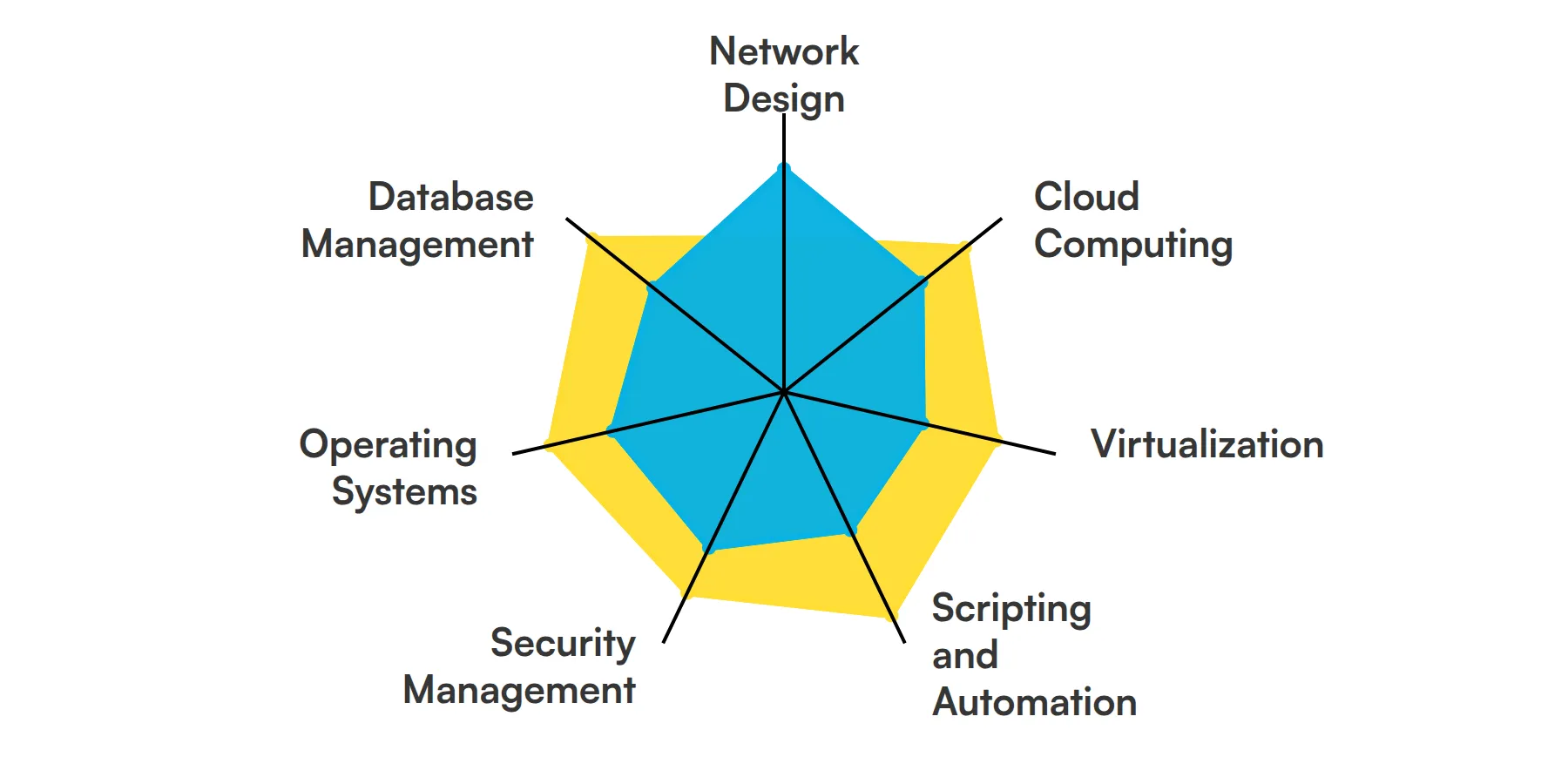
Network Design
Network design involves creating a blueprint for a company's IT infrastructure. An IT Infrastructure Developer uses this skill to ensure that the network is scalable, secure, and efficient, meeting the organization's current and future needs. This includes selecting appropriate hardware and software, as well as planning for redundancy and failover capabilities.
For more insights, check out our guide to writing a Network Engineer Job Description.
Cloud Computing
Cloud computing skills are crucial for managing and deploying applications in cloud environments like AWS, Azure, or Google Cloud. An IT Infrastructure Developer leverages these skills to design and implement scalable cloud solutions, optimizing resource usage and ensuring high availability. This involves understanding cloud architecture, services, and security best practices.
Virtualization
Virtualization allows multiple virtual environments to run on a single physical hardware system. IT Infrastructure Developers use this skill to maximize resource utilization and reduce costs. They work with technologies like VMware or Hyper-V to create virtual machines, manage storage, and ensure seamless operation of virtualized environments.
Scripting and Automation
Scripting and automation skills are used to automate repetitive tasks and streamline processes. An IT Infrastructure Developer writes scripts in languages like Python, Bash, or PowerShell to automate system configurations, deployments, and monitoring, thereby increasing efficiency and reducing the potential for human error.
Check out our guide for a comprehensive list of interview questions.
Security Management
Security management involves protecting IT infrastructure from threats and vulnerabilities. IT Infrastructure Developers implement security measures such as firewalls, intrusion detection systems, and encryption to safeguard data and systems. They also stay updated on the latest security trends and compliance requirements.
Operating Systems
A deep understanding of operating systems like Linux, Windows, and Unix is essential for managing and troubleshooting IT infrastructure. IT Infrastructure Developers use this knowledge to configure, maintain, and optimize system performance, ensuring that all components work harmoniously.
Database Management
Database management skills are necessary for handling data storage and retrieval efficiently. IT Infrastructure Developers work with databases like MySQL, PostgreSQL, or Oracle to ensure data integrity, optimize queries, and manage backups and recovery processes.
For more insights, check out our guide to writing a Database Administrator (DBA) Job Description.
8 secondary IT Infrastructure Developer skills and traits
The best skills for IT Infrastructure Developers include Load Balancing, Disaster Recovery, Monitoring Tools, Configuration Management, Storage Solutions, DevOps Practices, API Management and Hardware Knowledge.
Let’s dive into the details by examining the 8 secondary skills of a IT Infrastructure Developer.
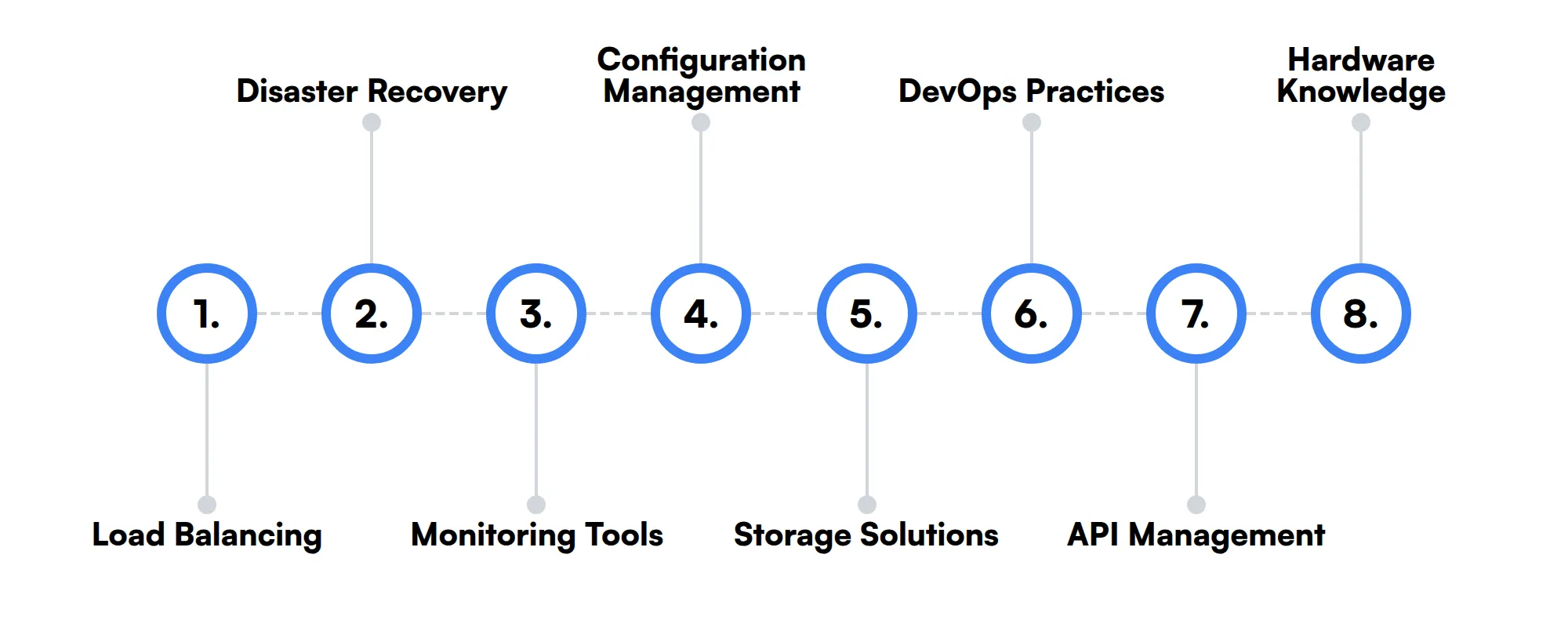
Load Balancing
Load balancing skills help distribute network or application traffic across multiple servers. This ensures no single server becomes overwhelmed, improving reliability and performance.
Disaster Recovery
Disaster recovery involves planning and implementing strategies to recover IT systems and data after a catastrophic event. This skill is crucial for minimizing downtime and data loss.
Monitoring Tools
Proficiency with monitoring tools like Nagios, Zabbix, or Prometheus is important for tracking system performance and identifying issues before they impact users.
Configuration Management
Configuration management skills involve maintaining system consistency and managing changes across IT infrastructure. Tools like Ansible, Puppet, or Chef are often used for this purpose.
Storage Solutions
Understanding storage solutions, including SAN, NAS, and cloud storage, is important for managing data effectively. IT Infrastructure Developers ensure data is stored securely and is easily accessible.
DevOps Practices
Familiarity with DevOps practices helps in bridging the gap between development and operations. This includes continuous integration, continuous deployment, and collaboration tools.
API Management
API management skills are used to create, publish, and manage APIs. This is important for enabling communication between different software components and services.
Hardware Knowledge
A solid understanding of hardware components, such as servers, routers, and switches, is necessary for troubleshooting and optimizing physical infrastructure.
How to assess IT Infrastructure Developer skills and traits
Assessing the skills and traits of IT Infrastructure Developers involves a nuanced understanding of both technical capabilities and the ability to apply them in real-world scenarios. The challenge lies not only in identifying proficiency in areas like Network Design, Cloud Computing, and Security Management, but also in evaluating how these skills are interwoven to drive business solutions.
Traditional methods such as reviewing resumes and conducting interviews may provide a surface-level view of a candidate's abilities but fall short in measuring actual competence and problem-solving skills. This is where practical assessments come into play, offering a deeper insight into a candidate's hands-on capabilities in managing and optimizing IT infrastructure.
To streamline the hiring process and ensure a match between the candidate's skills and your project needs, consider utilizing Adaface assessments. These tests are designed to mirror real-world problems, allowing you to assess critical skills such as Virtualization, Scripting and Automation, and Database Management. By integrating these assessments, companies have reported a 2x improvement in the quality of hires and an 85% reduction in screening time, making them a reliable tool in the recruitment arsenal.
Let’s look at how to assess IT Infrastructure Developer skills with these 6 talent assessments.
Network Engineer Online Test
Our Network Engineer Test evaluates candidates on their technical knowledge and practical skills related to computer networking. This includes network protocols, security, routing, and switching.
The test assesses candidates' understanding of network architecture, IP addressing, subnetting, and WAN technologies. It also evaluates their ability to diagnose and resolve network issues.
Successful candidates demonstrate proficiency in designing and maintaining complex network infrastructures and optimizing network performance.
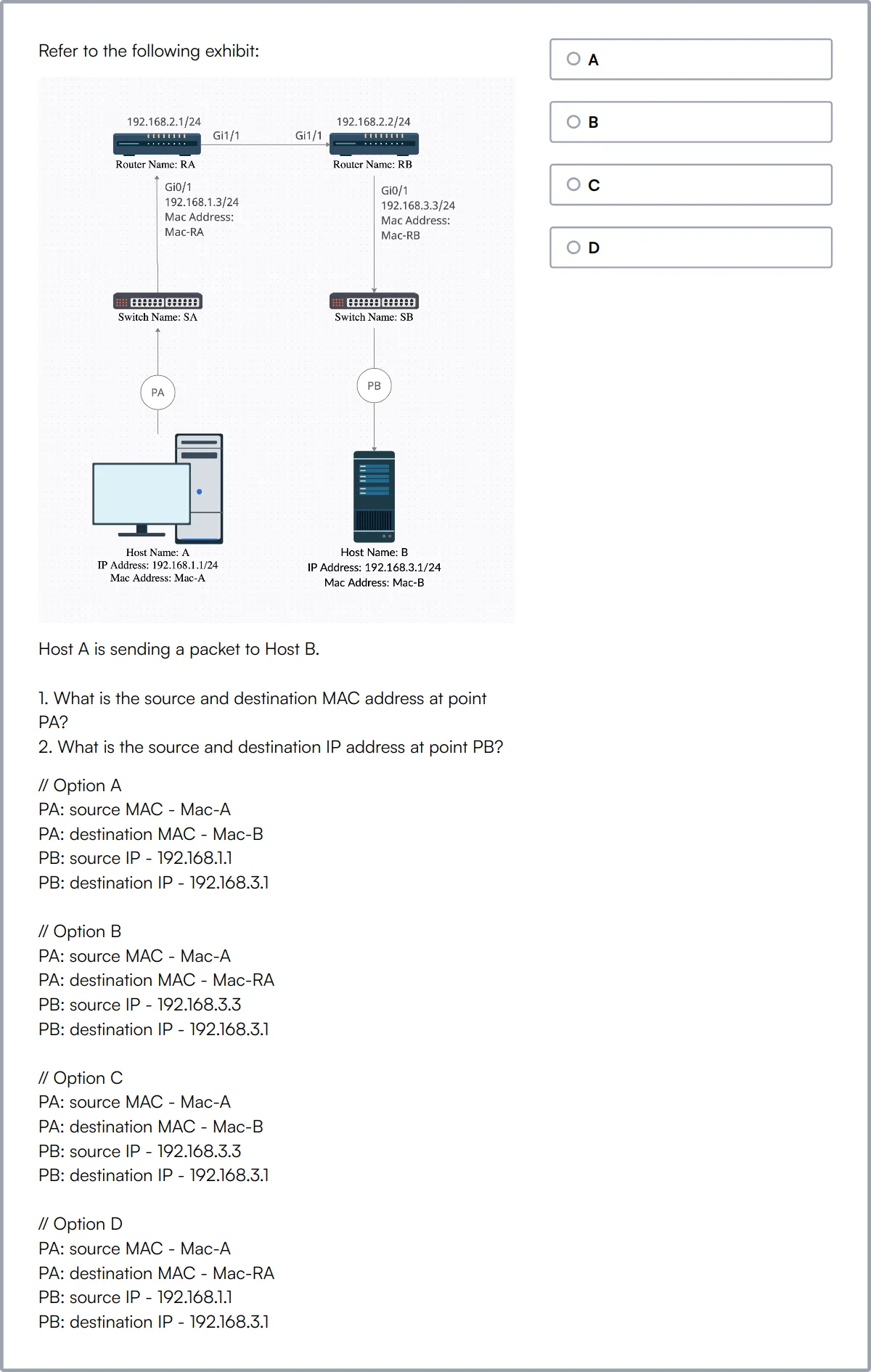
Cloud Computing Online Test
Our Cloud Computing Online Test evaluates a candidate's knowledge of cloud computing, covering service models, deployment models, and virtualization.
The test assesses proficiency in cloud security, scalability, storage and database management, and cloud networking. It also evaluates understanding of orchestration and automation.
Candidates who perform well show a strong grasp of cloud service providers and the ability to manage cloud-based environments effectively.
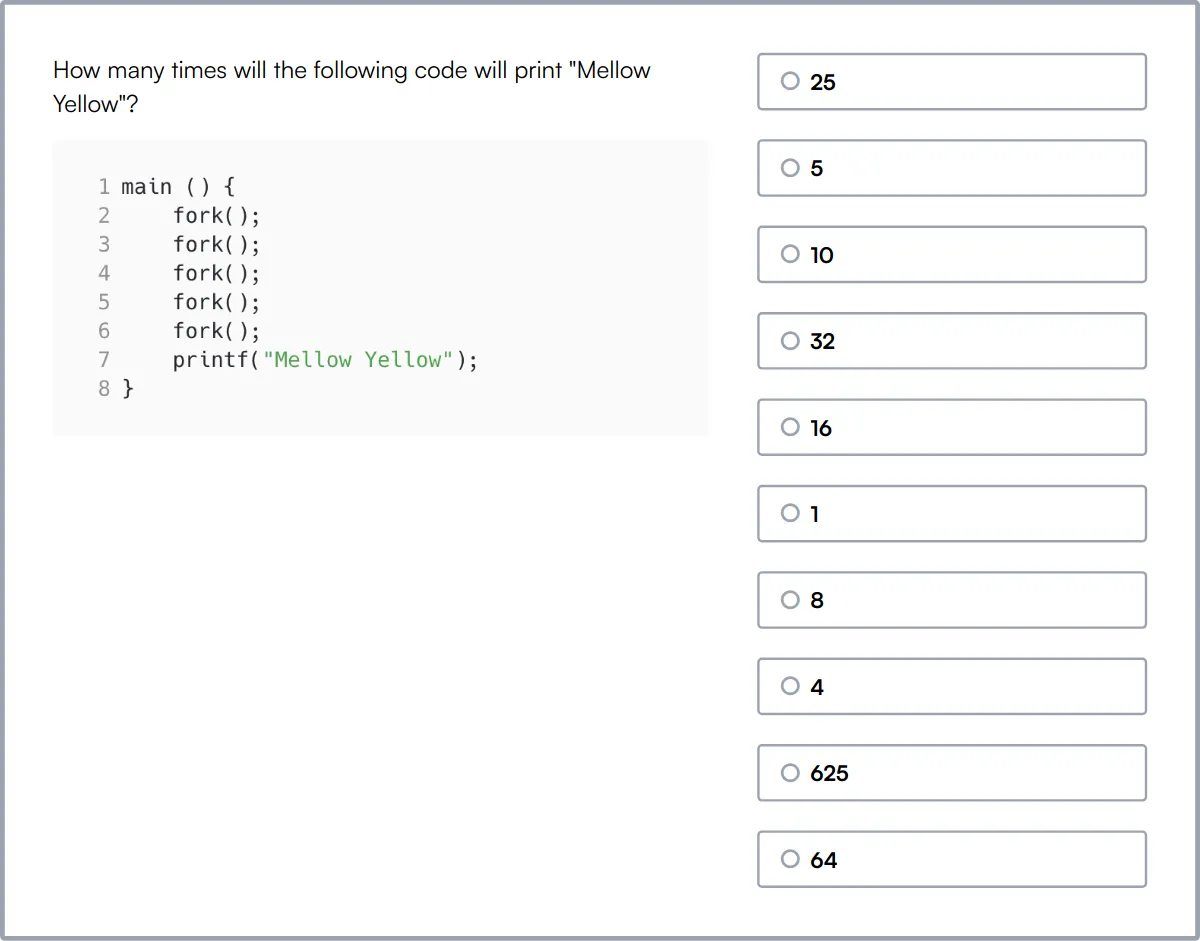
Windows System Administration Online Test
Our Windows System Administration Online Test evaluates candidates on core Windows system administration concepts, including Active Directory and group policy management.
The test covers network services, system monitoring, PowerShell scripting, and server security. It also assesses knowledge of server virtualization and disaster recovery.
High-scoring candidates demonstrate the ability to manage Windows-based enterprise environments and automate tasks using PowerShell.
PowerShell Online Test
Our PowerShell Online Test evaluates candidates on their proficiency in creating and running PowerShell scripts and managing Windows-based systems.
The test covers modules and functions, control flow and error handling, and file and folder management. It also assesses knowledge of security and permissions.
Candidates who excel in this test show strong skills in automating system tasks and managing remote servers using PowerShell.
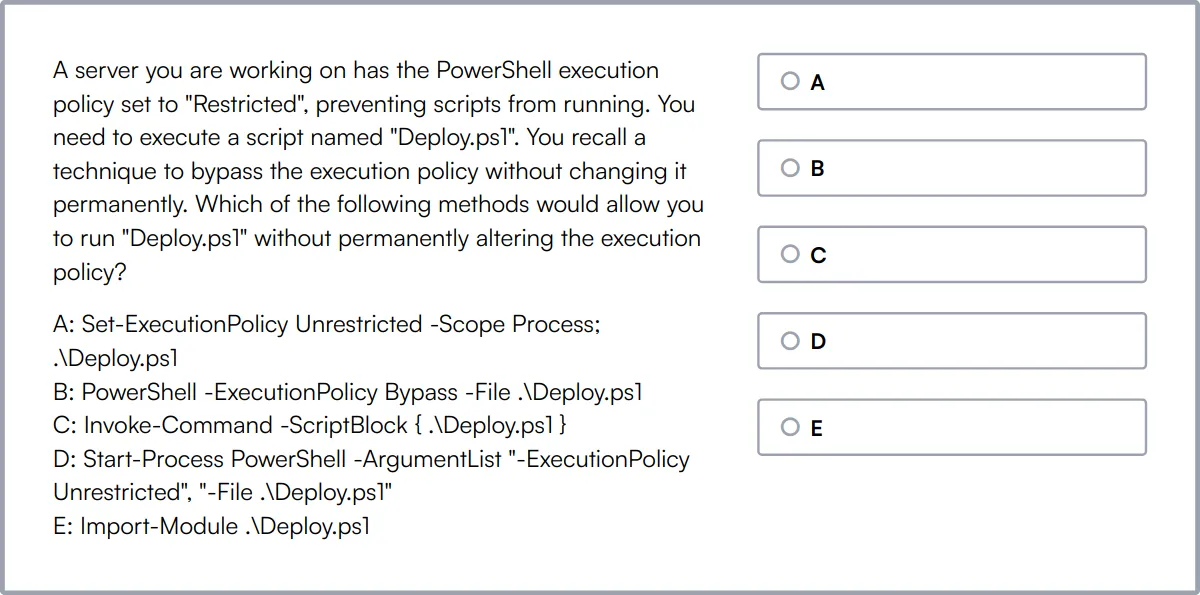
Cyber Security Assessment Test
Our Cyber Security Assessment Test evaluates candidates on cybersecurity basics, including network security protocols and cryptography.
The test assesses the ability to detect security risks, set up defenses against cyber attacks, and use cryptography techniques. It covers web security, email security, and malware.
Successful candidates demonstrate strong skills in conducting risk assessments and implementing cybersecurity defenses.
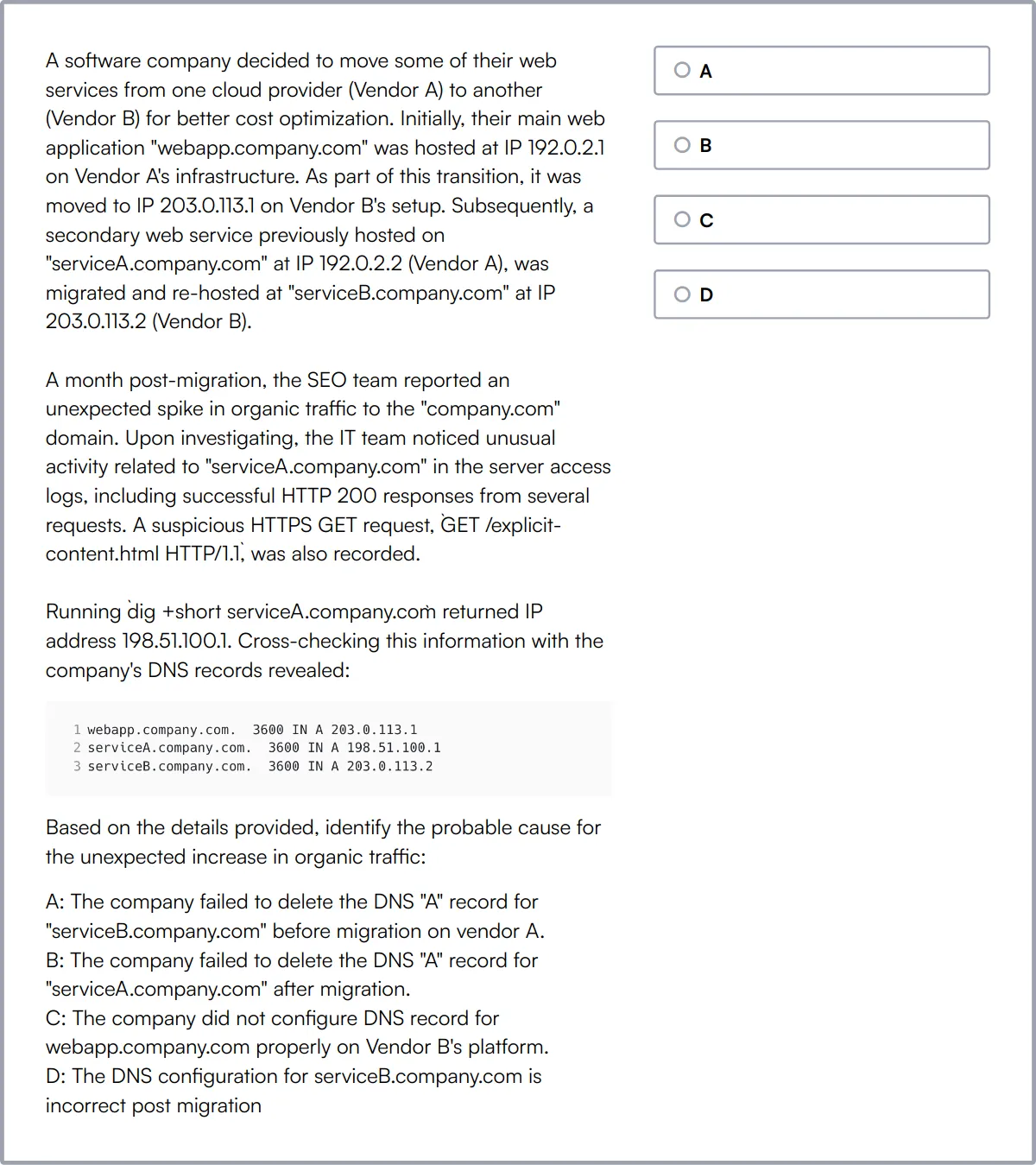
Linux Online Test
Our Linux Online Test evaluates candidates on their knowledge of the Linux operating system, including command line proficiency and file system management.
The test covers process management, networking, security, and shell scripting. It assesses the ability to design and maintain Linux-based systems.
Candidates who perform well show strong skills in Linux administration and the ability to work with Linux systems effectively.
Summary: The 7 key IT Infrastructure Developer skills and how to test for them
| IT Infrastructure Developer skill | How to assess them |
|---|---|
| 1. Network Design | Evaluate the ability to create scalable and reliable network architectures. |
| 2. Cloud Computing | Assess proficiency in deploying and managing cloud-based solutions. |
| 3. Virtualization | Check skills in creating and managing virtual environments. |
| 4. Scripting and Automation | Determine capability to automate tasks using scripts. |
| 5. Security Management | Review knowledge in implementing and maintaining security protocols. |
| 6. Operating Systems | Test understanding of various operating systems and their management. |
| 7. Database Management | Measure skills in database design, querying, and maintenance. |
Jenkins & Ansible Online Test
IT Infrastructure Developer skills FAQs
What skills are important for an IT Infrastructure Developer?
Key skills include network design, cloud computing, virtualization, scripting, security management, and operating systems knowledge. These skills help in building and maintaining IT infrastructure.
How can recruiters assess network design skills?
Recruiters can assess network design skills by asking candidates to explain past projects, review network diagrams, and solve hypothetical network scenarios during interviews.
What is the role of cloud computing in IT infrastructure?
Cloud computing allows for scalable and flexible infrastructure solutions. It involves using services like AWS, Azure, or Google Cloud to manage resources and deploy applications.
Why is scripting and automation important in IT infrastructure?
Scripting and automation help streamline repetitive tasks, reduce errors, and improve efficiency. Common scripting languages include Python, Bash, and PowerShell.
How do you evaluate a candidate's security management skills?
Evaluate security management skills by discussing security protocols, incident response strategies, and experience with tools like firewalls and intrusion detection systems.
What tools are used for monitoring IT infrastructure?
Common monitoring tools include Nagios, Zabbix, and Prometheus. These tools help track system performance, detect issues, and ensure uptime.
How does DevOps practice benefit IT infrastructure development?
DevOps practices promote collaboration between development and operations teams, leading to faster deployment, improved quality, and continuous integration and delivery.
What is the significance of disaster recovery in IT infrastructure?
Disaster recovery ensures business continuity by having plans and systems in place to recover data and operations after a disruption or failure.

40 min skill tests.
No trick questions.
Accurate shortlisting.
We make it easy for you to find the best candidates in your pipeline with a 40 min skills test.
Try for freeRelated posts
Free resources



